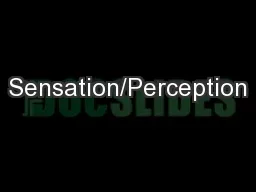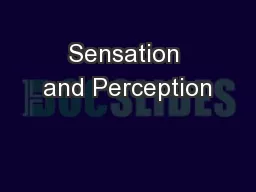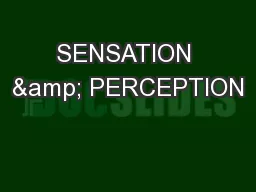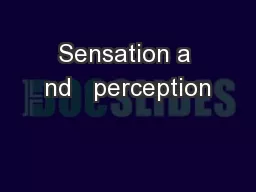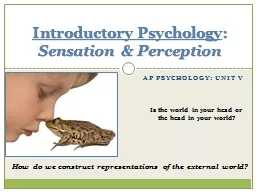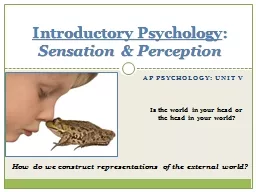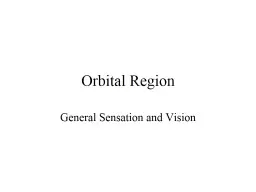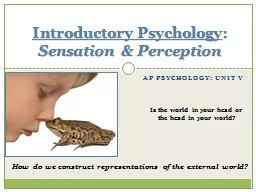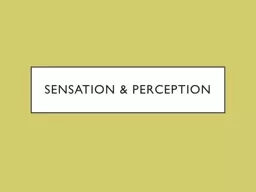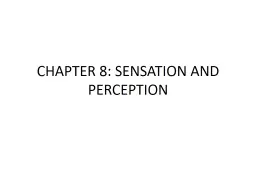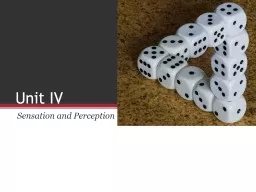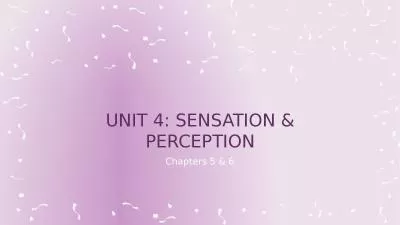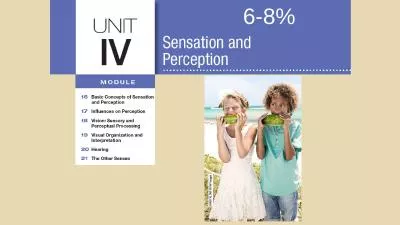PPT-Sensation/Perception
Author : karlyn-bohler | Published Date : 2017-10-24
AP PSYCH 42S 15 Daniel B amp HaoYi S Guess which term the picture correlates to Prev Gesalt Where one perceives an entire image before recognizing individual
Presentation Embed Code
Download Presentation
Download Presentation The PPT/PDF document "Sensation/Perception" is the property of its rightful owner. Permission is granted to download and print the materials on this website for personal, non-commercial use only, and to display it on your personal computer provided you do not modify the materials and that you retain all copyright notices contained in the materials. By downloading content from our website, you accept the terms of this agreement.
Sensation/Perception: Transcript
Download Rules Of Document
"Sensation/Perception"The content belongs to its owner. You may download and print it for personal use, without modification, and keep all copyright notices. By downloading, you agree to these terms.
Related Documents

